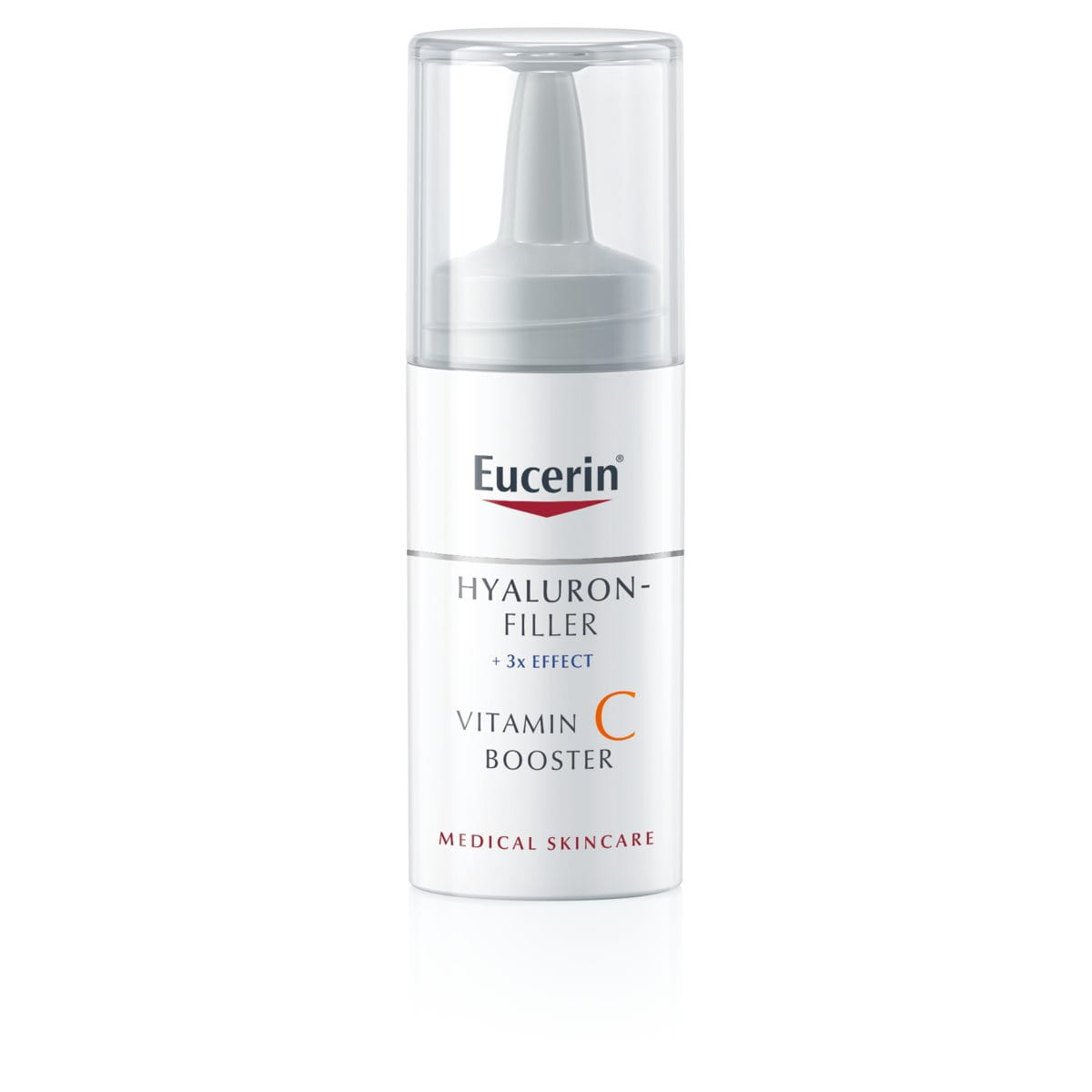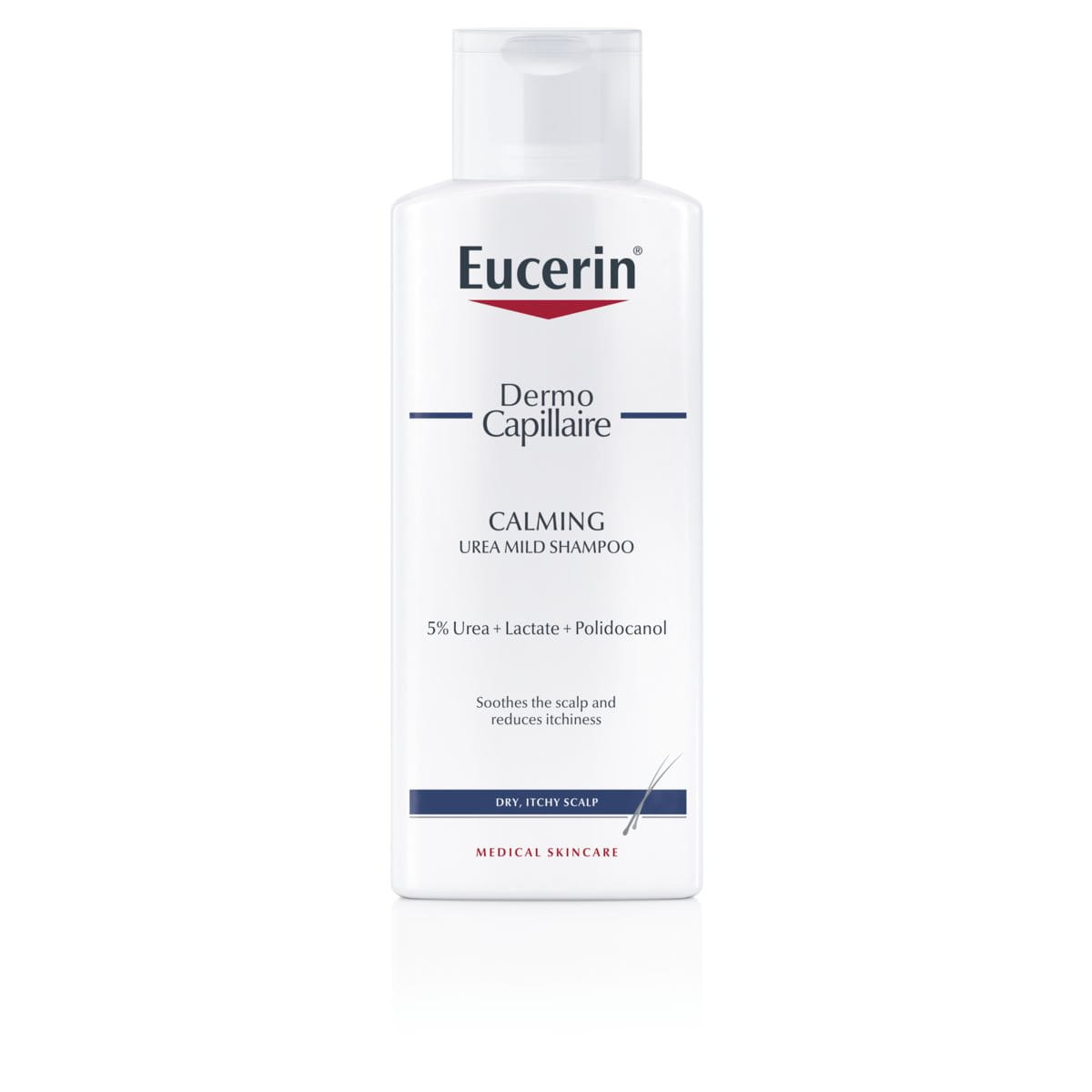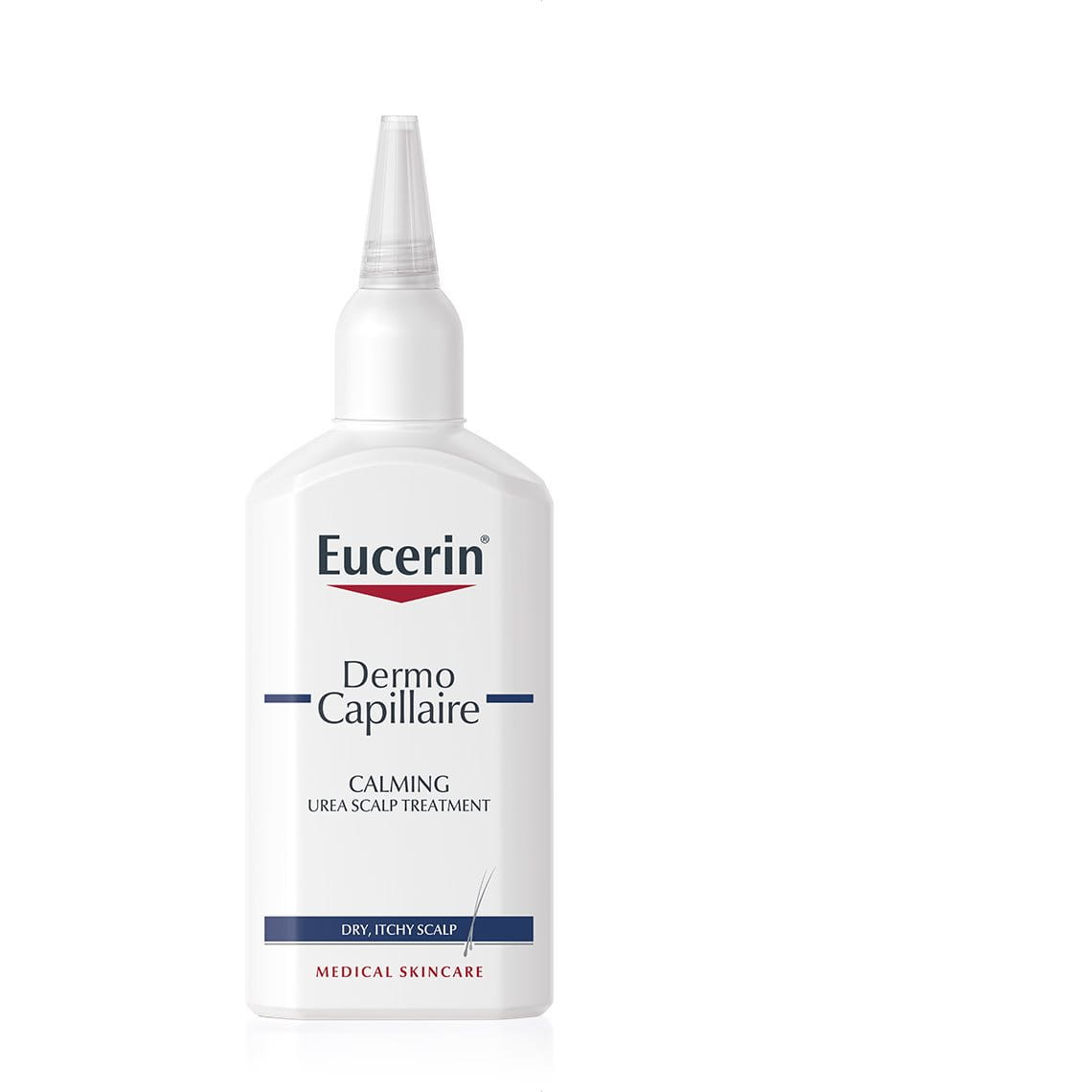Atopic Dermatitis is a chronic skin disease which can flare-up on the scalp and in the hairline. This article explains how to recognize if you or your child have Atopic Dermatitis versus other common scalp conditions. We look at the possible causes and triggers and make suggestions about how to care for atopic skin on the scalp.
How do I know if I have Atopic Dermatitis on my scalp?
If you or your child have red, itchy skin on your head and already experience Atopic Dermatitis (also known as Atopic Eczema) on other areas of your body then it is likely that the symptoms on your scalp are linked. Atopic Dermatitis is especially common in babies and children but many adults have it too. You can find out more in Atopic Dermatitis and babies, Atopic Dermatitis and children and Atopic Dermatitis and adults.
If you or your child do not have Atopic Dermatitis, then there are several other types of Dermatitis that are also common on the scalp and which present similar symptoms. These include:

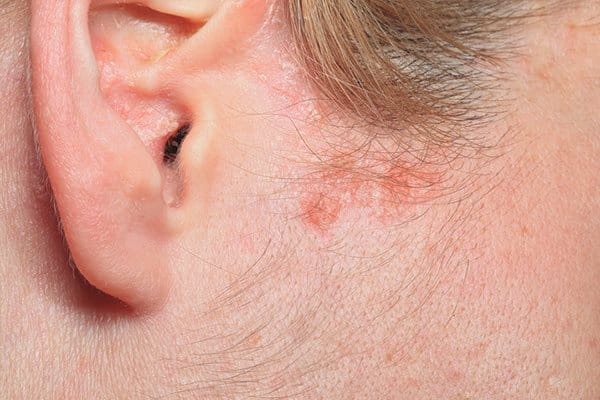
Seborrheic Dermatitis (or Seborrheic Eczema)
A common condition in babies where it is known as ‘Cradle Cap’. Thought by many scientist to be a type of fungal infection (although some believe it could be genetic and/or linked to the immune system) typical symptoms are thick, crusty, yellowish flakes of skin on the infant’s scalp, though it can also appear on the eyes and nose. Unlike Atopic Dermatitis, It is rarely itchy. Most children grow out of it as they get older and are normally symptom free by the age of three. You can find out more about Seborrheic Dermatitis in general here.
Dandruff
Seborrheic Dermatitis is thought to be the underlying causes of dandruff in adults. There are two different types: greasy dandruff (which manifests as oily, yellowish scales on the scalp similar to the symptoms of Seborrheic Dermatitis in babies) and dry dandruff (where the flakes are dry, white and loose and fall easily from the head and hair).
As with Atopic Dermatitis, skin often itchy and looks red. Dry dandruff is much more common in adults than children with up to 50% of the adult population suffering for it at some time. Read more about it in Dandruff.
What causes or triggers Atopic Dermatitis on the head?
Psoriasis
Like Atopic Dermatitis, Psoriasis is an inflammatory condition which is likely also to be genetic and linked to a compromised immune system. Rare in babies and children, Psoriasis most commonly effects adults and appears on the scalp. It is distinctive in appearance with inflamed skin overlaid by silvery scales. In severe cases it can cause hair loss. Find out more in Psoriasis.
Contact Dermatitis:
Contact Dermatitis (also known as Irritant or Allergic Dermatitis, or Contact Eczema) is caused by skin reacting to something external that it is, or has been, in contact with. Contact Dermatitis on the scalp is caused by a reaction to the chemicals in some shampoos, hair dyes or other hair grooming products. It may be that you are allergic to those ingredients or that they just irritate your skin.
Though not a skin condition, another common cause of an itchy scalp in children between the ages of three and twelve is head lice. Extremely contagious, lice are easy to treat and, once diagnosed (they are normally fairly easy to spot but do consult your doctor if in any doubt), your pharmacist will be able to recommend an appropriate treatment.
You can find out more about the symptoms of Atopic Dermatitis, and about how they differ on different parts of the body, in Facial Atopic Dermatitis, Atopic Dermatitis on the eyelids, Atopic Dermatitis on the hands and Atopic Dermatitis on different parts of the body.
If you are in any doubt as to which condition you have, or your or your child’s skin is in any way troubling you, consult your doctor for a diagnosis and for treatment advice.
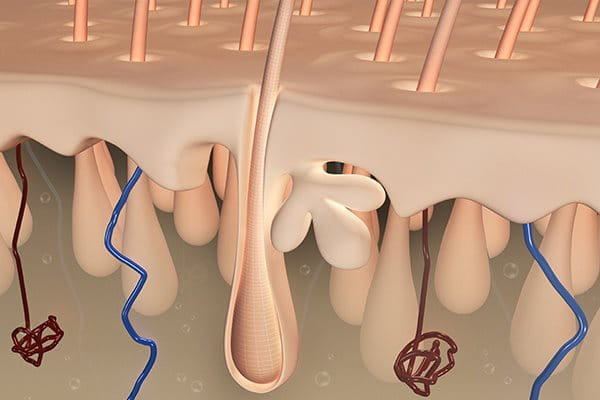
Atopic Dermatitis is a genetic condition thought to be linked to a compromised immune system. You can read all about the causes and triggers in Understanding Atopic Dermatitis.
The skin on our heads is significantly thicker than skin on the rest of the body, it is also densely populated with hair follicles and sebaceous and sweat glands. Our head plays a key role in regulating our body temperature.
Sweat, which our skin produces to cool itself down when it overheats, creates an ideal environment in which bacteria that trigger and exacerbate Atopic Dermatitis can thrive. Our hair helps to keep this bacteria in place and the fact that there are numerous follicles means that bacteria has lots of entry points into our skin so atopic skin on our scalp is easily irritated and prone to flare-ups. You can find out more about flare-ups in Identifying and managing flare-ups.
Regular hair washing and styling can also cause skin to dry out further exacerbating symptoms of Atopic Dermatitis, If our skin is in any way sensitive to the products we use then that can also trigger or increase inflammation. Once skin in this area has become dry and irritated, scratching makes the symptoms worse.
How should I care for atopic skin on the scalp?
For babies with little or no hair, skin care for Atopic Dermatitis on the scalp is similar to elsewhere on the body. Gentle cleansing and regular moisturising using products specially formulated for atopic skin, such as those in the Eucerin AtopiControl range, will help to give atopic scalps the daily, basic care they need as well as to prolong the period in between flare-ups and calm skin during an acute flare-up. You can find out more in Atopic Dermatitis and babies.
For children and adults, hair can often make caring for an atopic scalp more complicated. Creams and ointments which are easy to apply to other areas of the body make hair look greasy and lank and result in the person feeling depressed about their appearance. Read more in How Atopic Dermatitis affects sleep and quality of life. Here are some suggestions on how to care for an atopic scalp:

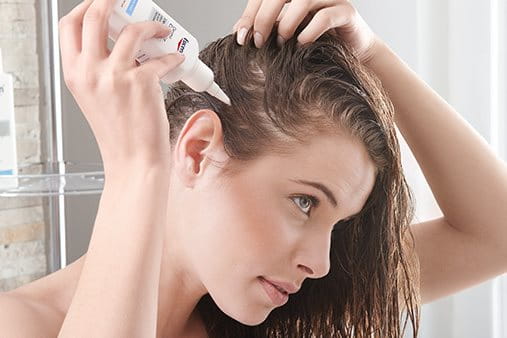
Cleaning your hair and scalp
Wash your or your child’s hair with a gentle shampoo that is free-from perfume and colourants and which has proven to be kind on sensitive skin. Try Eucerin DermoCapillaire Calming Urea Shampoo.
Avoid showering more than once a day, turn down the pressure and use lukewarm water whenever possible. Frequent showering and water that is too hot can cause further dryness to skin. A strong blast and cold water can also cause unnecessary irritation to your scalp.
Try not to change products too often. And make sure you rinse out your shampoo thoroughly. After showering, wrap a towel around your head to dry it rather than rubbing your hair dry or using a hair dryer. The rubbing will aggravate your itchy scalp and the heat of the dryer (or other styling products such as straighteners or tongs) can cause further dryness to your scalp. If you do want to blow-dry your hair try to use the cool setting and avoid styling products such as mousses and gels.
Keep your hair and scalp moisturised
Regular moisturisation is important for atopic skin on your scalp. Try Eucerin DermoCapillaire Calming Urea Scalp Treatment which is a non-sticky, leave-on formula that delivers hours of intense moisture to your scalp and soothes and reduces itchiness from the first use.
During flare-up, when soothing and calming atopic skin takes priority over your appearance, you can apply a medical treatment ointment and Eucerin AtopiControl Acute Care Cream. Whilst not a medical product, or intended to replace one, Eucerin AtopiControl Acute Care Cream is ideal as an adjunctive care product (adjunctive is a medical term meaning that something increases the benefits of another product). It contains Menthoxypropandiol (an extract of menthol) and Decanediol (an anti-bacterial active) which are proven to cool and calm skin and bring quick relief.
Avoid hair dyes
Try and avoid any products that may dry your scalp out and cause further irritation to your skin.
What else can I do to reduce symptoms of Atopic Dermatitis on my scalp?
Because there is no known cure for Atopic Dermatitis, try to identify and avoid potential triggers to reduce the chances of it flaring up. You can find out more about the steps you can take in Understanding Atopic Dermatitis.
If symptoms persist, or if your skin is in any way bothering you, be sure to contact your doctor.
Our brand values

We deliver a holistic dermo-cosmetic approach to protect your skin, keep it healthy and radiant.

For over 100 years, we have dedicated ourselves to researching and innovating in the field of skin science. We believe in creating active ingredients and soothing formulas with high tolerability that work to help you live your life better each day.

We work together with leading dermatologist and pharmacist partners around the world to create innovative and effective skincare products they can trust and recommend.


